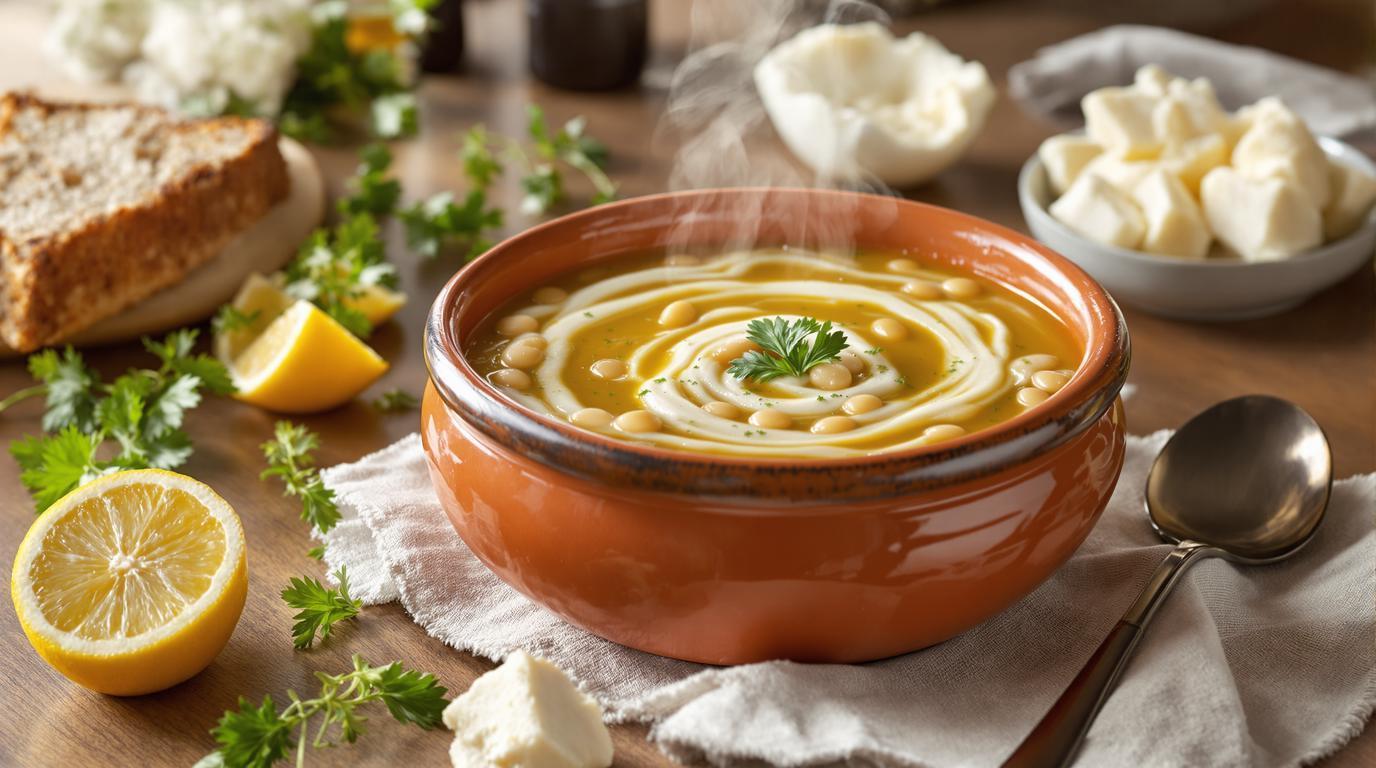The first time I encountered true Greek fasolada, I was hiking through a small village outside Thessaloniki. Exhausted and hungry, I ducked into a taverna where the owner’s grandmother insisted I try her white bean soup. What arrived was nothing like the tomato-heavy versions I’d eaten before—this was a velvety, olive oil-infused revelation with a bright lemon finish that immediately transported me. That bowl changed my understanding of what bean soup could be: not just sustenance, but a celebration of simplicity and technique. I’ve spent years perfecting my version of this pre-tomato traditional recipe, and I’m thrilled to share it with you.
The Story 📖
Fasolada (Φασολάδα) stands as Greece’s unofficial national dish—a humble white bean soup that predates the introduction of tomatoes to Mediterranean cuisine. While modern versions often incorporate tomato, the truly traditional preparation relies on the trinity of beans, olive oil, and aromatics, brightened with lemon. This is peasant food elevated to art through patience and quality ingredients. What fascinates me is how this ancient recipe—dating back to Byzantine times—teaches modern cooks that sometimes fewer ingredients, treated respectfully, create the most profound flavors.
Ingredients Spotlight 🧪
For 4 generous servings:
- 1 cup (200g) dried white beans (navy or great northern), soaked overnight
- ½ cup (120ml) extra virgin Greek olive oil (yes, this much!)
- 1 medium yellow onion, finely diced (about 1 cup/150g)
- 2 medium carrots, diced (about ¾ cup/100g)
- 2 celery stalks, diced (about ½ cup/70g)
- 4 garlic cloves, minced (optional but recommended)
- 9 cups (2L) water or vegetable broth
- 1 bay leaf
- Fresh parsley, chopped (one generous handful)
- 2 tablespoons fresh lemon juice
- Sea salt and freshly ground black pepper
- 1-2 tablespoons all-purpose flour (optional, for thickening)
Step-by-Step Guide 📝
1. Prepare the beans: After soaking dried beans overnight, drain and rinse thoroughly. Place in a pot with fresh water, bring to a simmer, and parboil for 30-40 minutes until tender but not mushy. Drain and rinse again—this double-rinse technique dramatically reduces the beans’ gas-causing compounds.
2. Build the aromatic base: In a heavy-bottomed pot (I prefer enameled cast iron), heat the olive oil over medium heat. Add onion, carrots, and celery, sautéing until they develop a golden hue—about 10-12 minutes. This slow cooking in abundant olive oil isn’t just a step; it’s the foundation of the soup’s character.
3. Create the broth: Add the parboiled beans, water or broth, bay leaf, and a modest amount of salt and pepper. Bring to a gentle simmer—never a rolling boil—and cook uncovered for 30 minutes, allowing the liquid to reduce slightly and the flavors to concentrate.
4. Finish with brightness: In the final 5 minutes, stir in the chopped parsley and lemon juice. The acidity cuts through the richness of the olive oil while amplifying the beans’ earthy notes. Taste and adjust seasoning—this is your moment to perfect the balance.
Chef’s Note: Never add lemon juice early in the cooking process—acids toughen bean skins and dramatically increase cooking time. This is the most common mistake I see when people struggle with bean soups. Acidity always comes last!
Expert Techniques 🛠️
The secret to transcendent fasolada lies in understanding the role of olive oil. Unlike most Western soups where fat is minimal, authentic Greek cooking embraces olive oil as a primary ingredient, not just a cooking medium. The generous half-cup creates what Greeks call “λαδερά” (ladera)—oil-based dishes with a luxurious mouthfeel.
For thickening, you have options. Traditionally, some cooks create a slurry with 1-2 tablespoons of flour mixed with cool broth, then stir it in during the final 5 minutes. My preferred technique, however, is to mash about ¼ of the beans against the side of the pot with a wooden spoon. This creates a naturally thickened broth while maintaining textural contrast.
Presentation & Pairing Ideas 🍽️
Serve fasolada in wide, shallow bowls to maximize surface area for that final drizzle of olive oil—which should pool slightly on top, creating beautiful emerald islands. Accompany with a wedge of lemon, allowing diners to adjust acidity to taste.
The traditional accompaniment is crusty bread or barley rusks, perfect for soaking up the flavored oil. For a complete meal, add a simple Greek salad (cucumber, tomato, feta) or a plate of Kalamata olives. Wine-wise, look to Greece’s indigenous grapes—a crisp Assyrtiko from Santorini provides gorgeous contrast, while a light Agiorgitiko offers complementary warmth.
For dietary variations, this recipe is naturally vegan and gluten-free (if skipping the flour thickener). In summer, I sometimes add fresh dill and mint instead of just parsley, creating a brighter profile perfect for warmer months.
Remember that fasolada, like all truly great dishes, improves with time—make it a day ahead if possible, allowing the flavors to meld overnight. The next day, gently reheat, adding a fresh splash of lemon juice and olive oil just before serving to revive the bright notes. This isn’t just soup; it’s culinary heritage in a bowl, where economy and luxury meet in perfect harmony. Make it your own, but always respect the foundations—beans, aromatics, olive oil, and that final touch of acid—that have made this dish beloved for centuries.
